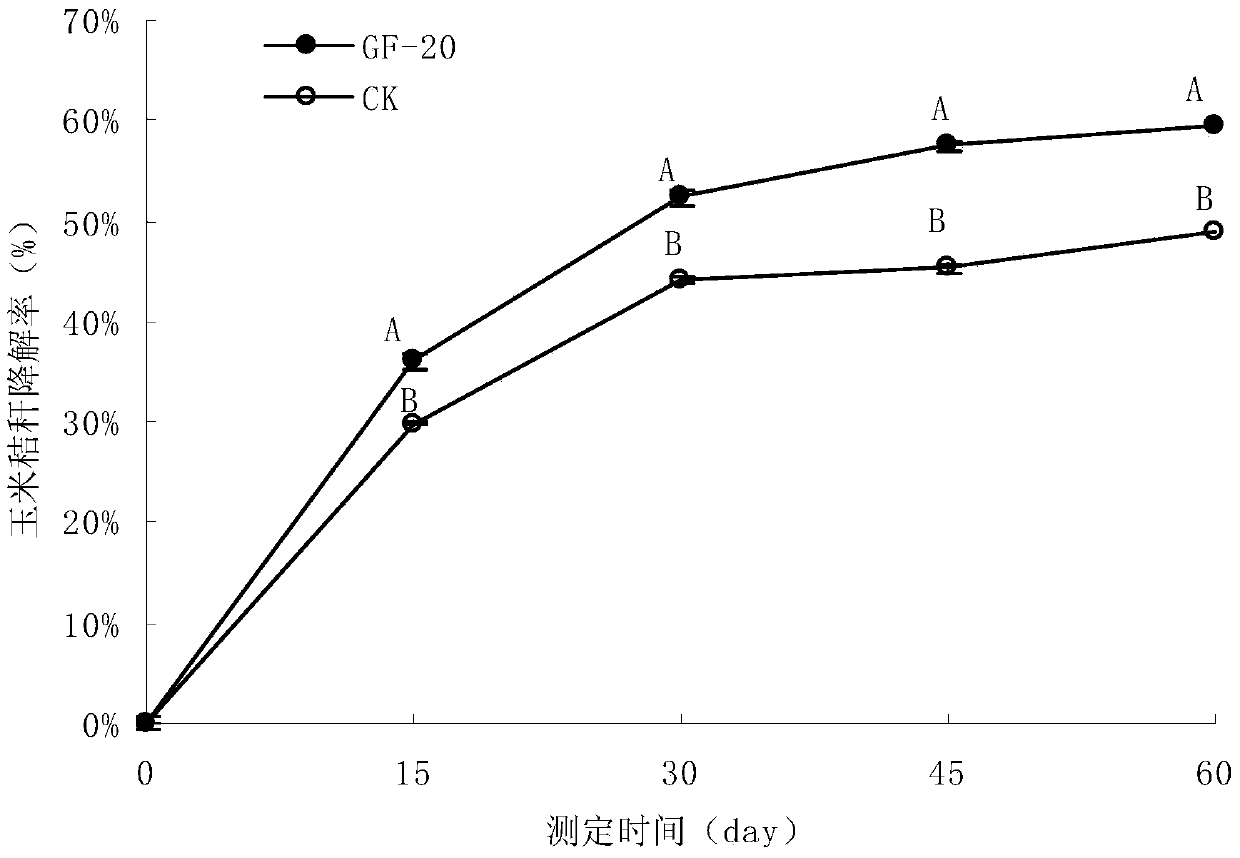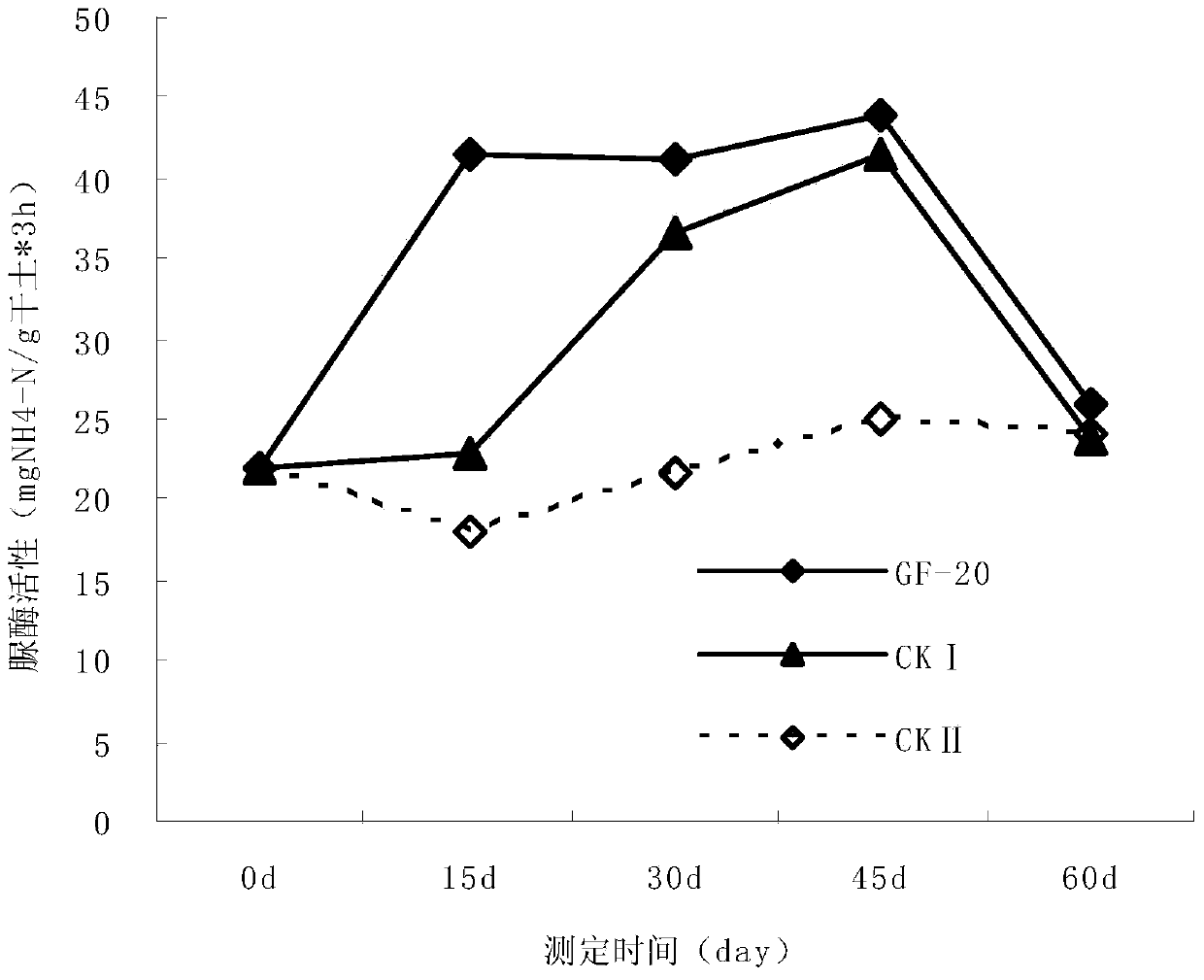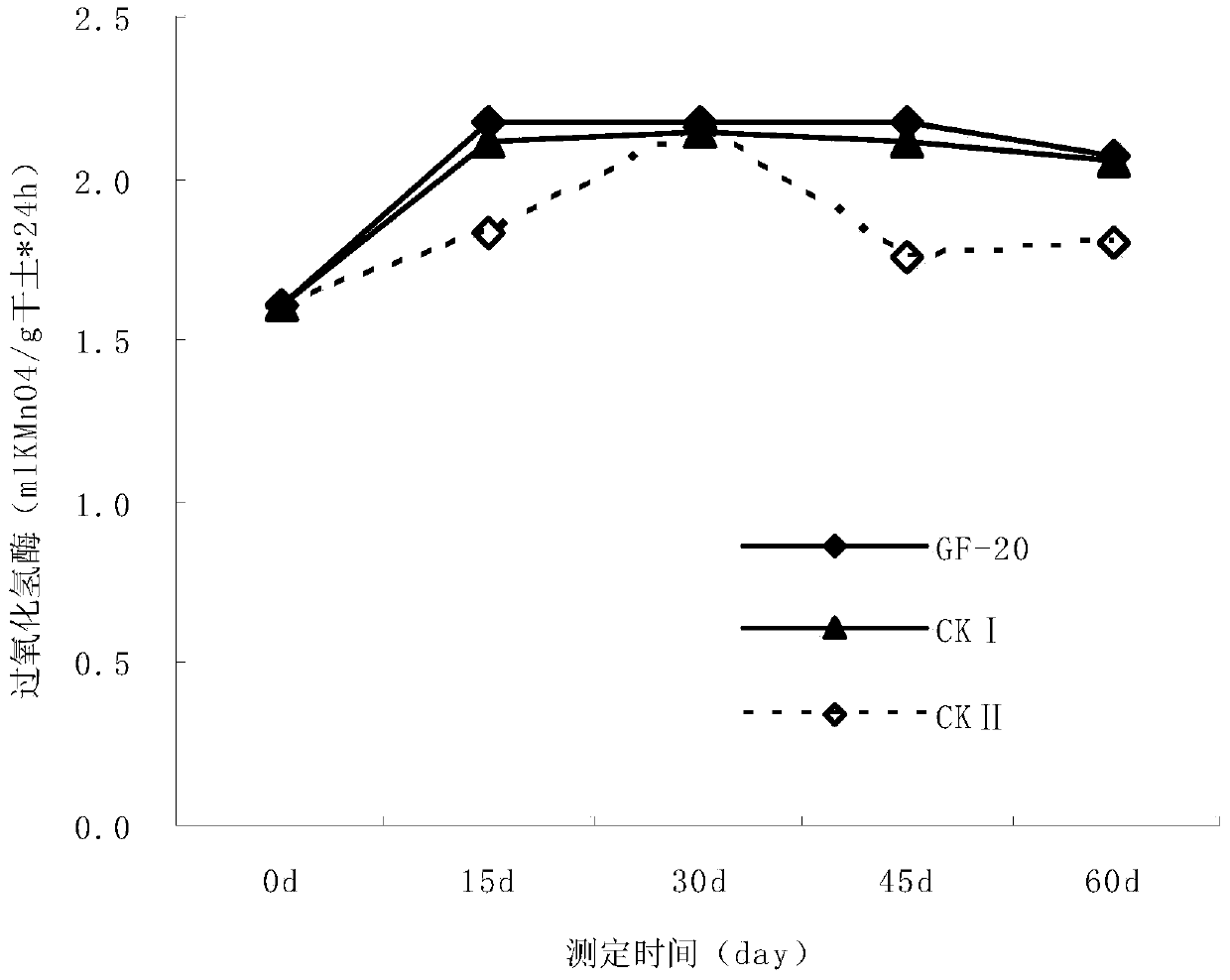Low temperature efficient corn stalk degradation composite microbial system and application thereof
A corn stalk and compound bacteria technology, applied in the field of microorganisms, can solve the problems of low enzyme activity, low cellulase activity, easy degradation, etc., and achieve the effects of improving soil fertility, improving various enzyme activities, and efficiently degrading
- Summary
- Abstract
- Description
- Claims
- Application Information
AI Technical Summary
Problems solved by technology
Method used
Image
Examples
Embodiment 1
[0044] Embodiment 1: the screening acclimation of compound strain of the present invention
[0045] Enrichment culture:
[0046] Wash and dry the natural corn stalks harvested in autumn to constant weight, cut them into lengths of about 1-2 cm, and sterilize them at 121°C and 101Pa for 30 minutes for later use.
[0047] The soil extract is prepared by mixing soil and deionized water at a mass ratio of 1:1, bathing in water at 60°C for 2 hours, and filtering and sterilizing
[0048] The soil of Changchun City's corn stalks returned to the field for many years containing Cellvibrio, Azospira, Arcobacter, Azonexus, Clostridium, Paludibacter, Lotharella, and Trichosporon bacteria was inoculated into a Whatman NO1 filter paper strip (2* 6cm, half of which is immersed below the liquid level of the culture medium, and half of which is above the liquid level), rotate gently at 50rpm / min for 30min and then culture at 25°C. The enrichment medium contains 5g / L peptone, 1g / L yeast extr...
Embodiment 2
[0057] Embodiment 2: the identification of composite bacterial strain of the present invention
[0058] The composite bacterial strain screened in Example 1 was used to determine the strain composition of the strain 16S-rDNA and 18S-rDNA sequences, and the results are shown in Table 1.
[0059] Table 1 Composition of microbial strains of complex bacterial strains
[0060]
[0061] According to the method of Example 1, cellulose-rich corn stalk returning soil, cattle and sheep dung, and grassland meadow soil were respectively used as bacterial source samples in the alpine regions of northern my country. A total of 128 samples were used to screen the composite bacterial strains. 198 copies of the composite strains were screened out, and the composition of the strains was determined by the 16S-rDNA and 18S-rDNA sequences of the strains. The results showed that each strain in the screened composite strains belonged to Cellvibrio, Azospira, Arcobacter , Azonexus, Clostridium, Pal...
Embodiment 3
[0062] Embodiment 3: Degradation rate determination of corn stalks
[0063] Put 10g / Kg of straw / soil in a 2L sterilized glass beaker, cultivate it in the dark at 10°C for 60 days, and measure the soil water content regularly to maintain soil humidity. Sampling was carried out every 15 days from the beginning of the test until the end of the 60th day. The three-point vertical method was used to collect, and it was fully mixed for later use, with 5 repetitions.
[0064] Set treatment: GF-20: soil + straw + compound bacterial strain of Example 1 of the present invention
[0065] CK: soil + straw
[0066] Straw degradation rate = (weight of corn stalks before cultivation - weight of corn stalks after cultivation) / weight of corn stalks before cultivation
[0067] See the test resultsfigure 1 . Depend on figure 1 It can be seen that the straw degradation rate gradually increases with the prolongation of the soil cultivation time for the two treatments; among different treatmen...
PUM
 Login to View More
Login to View More Abstract
Description
Claims
Application Information
 Login to View More
Login to View More - R&D
- Intellectual Property
- Life Sciences
- Materials
- Tech Scout
- Unparalleled Data Quality
- Higher Quality Content
- 60% Fewer Hallucinations
Browse by: Latest US Patents, China's latest patents, Technical Efficacy Thesaurus, Application Domain, Technology Topic, Popular Technical Reports.
© 2025 PatSnap. All rights reserved.Legal|Privacy policy|Modern Slavery Act Transparency Statement|Sitemap|About US| Contact US: help@patsnap.com



